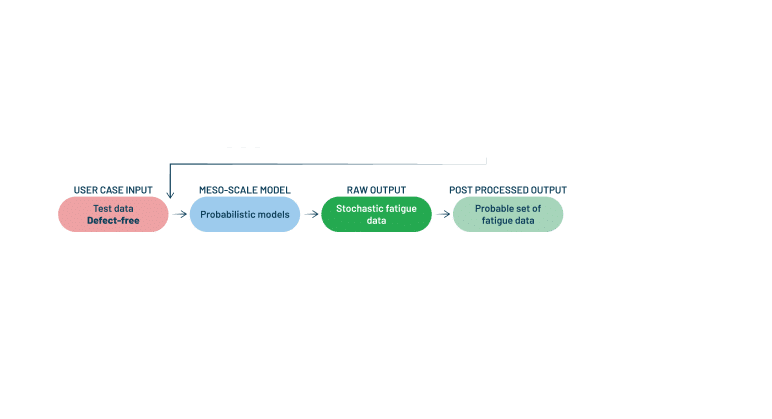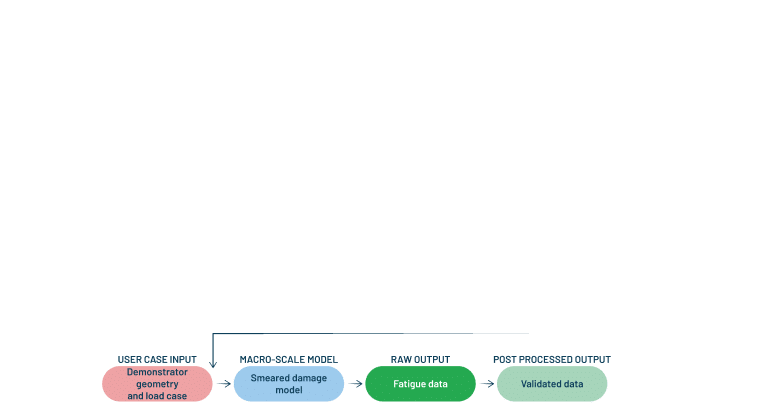Schematic overview of the modelling strategies
In D-STANDART our ambition is to combine and apply advanced phenomenological composite multi-scale (micro, meso, macro) damage models and probabilistic methods that have only recently become available.
This is achieved by (1) a well-posed predictive model including probabilistic damage mechanics and cohesive fatigue interlaminar methods (2) the ability to run this model with a larger amount of variation in properties, fatigue loads, conditions and (3) by using this information to feed an AI method to recognise patterns and derive a surrogate composite fatigue model applied at macro level.
Under this approach the number of required experiments can be drastically reduced, and also more knowledge is gained on the sensitivities meso- and macro-level structures based on micro-level of material properties.
MODA workflow
AI surrogate modelling
A multi-scale method for fatigue life estimation is proposed to overcome the scope limitations of the current data-driven models for fatigue life estimation of generic composite structures.
AI-based surrogate models will be trained offline at the mesoscale using high-fidelity physics-based simulation data, sampled with an adaptive scheme to cover the wide range of parameter variations without incurring prohibitive sampling cost.
The deep ensemble approach, will be used for scalable uncertainty quantification.This mesoscale model, once fully trained, will be employed at the integration points of the macroscale structural models of arbitrary geometries for online fatigue-life predictions under generic boundary and loading conditions.






